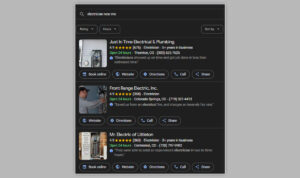Here are 10 steps to help you with seasonal promotion. Promoting seasonal products as an affiliate marketer can be lucrative if you know how to do it right.
By aligning your marketing strategies with seasonal trends, you can boost your relevance and increase your earnings.
This page contains affiliate links, we may earn a commission if you make a purchase through those links.

-
Table of Contents
Key Takeaways
1. Incorporate Seasonal Keywords and Phrases
Identifying Seasonal Trends
Researching Keywords
Incorporating Keywords into Content
2. Select Relevant Seasonal Affiliate Products
Researching Your Niche
Evaluating Commission Rates
Testing and Choosing Seasonal Products
3. Incorporate Affiliate Links Strategically
Ensuring Contextual Relevance
Natural Placement of Links
Using Call-to-Actions and Diversifying Links
4. Track Performance of Seasonal Content and Promotions
Using Analytics Tools
Monitoring Social Media Metrics
Setting Up Key Performance Indicators (KPIs)
5. Leverage Busy Shopping Seasons
Planning Ahead for Seasonal Campaigns
Tailoring Content to the Season
Using Emotional Appeal in Marketing
6. Understand Seasonal Products You Promote
Knowing the Features and Benefits
Using the Products Yourself
Staying Updated on Product Changes
7. Retarget Affiliate Customers During Seasonal Campaigns
Identifying and Retargeting Interested Customers
Creating Personalized Ads for Retargeting
Monitoring and Adjusting Retargeting Campaigns
8. Optimize Your Content for Mobile Users
Using Responsive Design
Simplifying Navigation
Optimizing Loading Speed
9. Use Social Proof to Boost Credibility
Including Customer Reviews
Showcasing User-Generated Content
Displaying Trust Badges
10. Create Urgency with Limited-Time Offers
Highlighting Time-Sensitive Deals
Using Countdown Timers
Promoting Flash Sales
Conclusion
Frequently Asked Questions
-
What are seasonal keywords?
-
How can I find seasonal keywords?
-
Why is it important to select relevant seasonal affiliate products?
-
How should I place affiliate links in seasonal content?
-
What tools can I use to track the performance of my seasonal affiliate links?
-
Why should I focus on busy shopping seasons?
-
How can I better understand the seasonal products I promote?
-
What is retargeting in seasonal affiliate marketing?
-
Key Takeaways
-
Use seasonal keywords to improve your content’s relevance and search engine ranking.
-
Choose affiliate products that match the current season and your content theme.
-
Place affiliate links thoughtfully within your content to add value for your audience.
-
Monitor the performance of your content and promotions to see what works best.
-
Capitalize on busy shopping seasons like Black Friday and Christmas for higher sales.
1. Incorporate Seasonal Keywords and Phrases
Incorporating seasonal keywords and phrases into your content is essential for improving its relevance and search engine ranking.
Using the right keywords can help your content appear in search results when people are looking for seasonal products.
Steps to Follow:
Identify Seasonal Trends
Use tools like Google Trends to see when certain keywords are most popular. For example, “Christmas gift ideas” might peak in search volume during November and December.
Research Keywords
Use keyword research tools to find related keywords and phrases. Look for keywords with high search volume but low competition.
Using Diib, I researched for the keyword “swimsuit”. You can see that it’s very hard to rank with this keyword. So you’ll have to explore long tail keywords.
Get Diib Free Plan Today

Incorporate Keywords
Add these seasonal keywords naturally into your content, such as blog posts, product descriptions, and social media updates.
When you create quality content and use seasonal keywords, you can enhance visibility and drive organic traffic during peak shopping periods.
2. Select Relevant Seasonal Affiliate Products
Choosing the right seasonal products to promote is crucial for your success as an affiliate marketer.
Here’s how to select products that will resonate with your target audience:
Research Your Niche
Understand what your audience is interested in during specific seasons.
For example, promote holiday decorations in winter or swimwear in summer.
You don’t have to reinvent the wheel!
Evaluate Commission Rates
Compare the commission rates of different seasonal products.
Higher commissions can mean more earnings, but also consider the product’s price and how well it sells during the season.
Test the Products
Always try the seasonal products yourself to provide honest reviews and build trust with your audience.

Consider the Season
Focus on products that sell better during certain times of the year, like Halloween costumes in October or back-to-school supplies in August.
3. Incorporate Affiliate Links Strategically
Incorporating affiliate links strategically is crucial for maximizing your earnings during seasonal promotions.
Strategically placed affiliate links can enhance user experience and increase your conversion rates.
Here’s how to do it effectively:
Contextual Relevance
Ensure that your affiliate links are contextually relevant to the seasonal content.
For example, in a blog post on “Top Christmas Gift Ideas,” include links to products that make great gifts.
Natural Placement
Place your affiliate links naturally within the content, ensuring they fit seamlessly and add value to the reader.
Integrating links in a way that feels organic enhances the user experience and increases the likelihood that readers will click through and make a purchase.
Below, I integrated 3 affiliate links (in red), while delivering valuable and helpful information for my readers.

I give you a few affiliate link placement ideas. It’s all about delivering value first.
-
In-Content Recommendations: Mention products naturally within your content where it makes sense, like when discussing a solution or sharing tips. One my preferred one as I’m blogging a lot.
-
Product Reviews: Write honest, detailed reviews of products you’ve used. Share pros and cons, and link to the product as part of your experience.
-
How-To Guides: Create step-by-step tutorials or guides where the affiliate product is part of the process.
-
Comparison Posts: Compare two or more products, providing unbiased insights. Place affiliate links for all options so readers can choose.
-
Resource Pages: Create a “Resources” or “Tools I Use” page listing helpful tools and products with affiliate links. A powerful one if done well.
-
Email Newsletters: Include affiliate links in your email newsletter in a way that adds value, such as product suggestions or helpful resources.
-
Video Content: If you create video content, mention products or services and include affiliate links in the video description.
-
Product Roundups: Write blog posts or create videos that round up a list of products on a specific topic, adding affiliate links for each one.
-
FAQs and Troubleshooting Guides: Answer common questions or solve problems, linking to affiliate products as part of the solution.
-
Testimonials or Case Studies: Share a personal story or someone else’s success story with the affiliate product included.
-
Freebies and Downloads: Offer free resources like eBooks or templates, and include affiliate links within the content.
Using Call-to-Actions and Diversifying Links
Encourage your readers to click on your affiliate links by using compelling CTAs, such as “Discover the perfect holiday gift here.”
Use a mix of text links, banners, and buttons to keep your content dynamic and engaging.
Canva is a great tool that you can use to create banners.
4. Track Performance of Seasonal Content and Promotions
Tracking the performance of your seasonal content and promotions is crucial for optimizing your strategies.
Consistent tracking and analysis of your seasonal promotions help you make informed decisions and improve your affiliate marketing efforts over time.

Here are some steps to help you track your performance effectively:
Use Analytics Tools
Utilize tools like Google Analytics to monitor your website traffic and see which seasonal pages are getting the most clicks on your affiliate links.
Monitor Social Media Metrics
If you’re promoting seasonal products on social media, use platform analytics to track engagement, clicks, and conversions.
Set Up Key Performance Indicators (KPIs)
Define success metrics for your seasonal campaigns, such as the number of clicks, conversions, or revenue generated.
Setting clear goals will help you measure the effectiveness of your efforts and identify areas for improvement.
Regularly Review and Adjust
Review your data regularly to see what’s working. Make adjustments to your seasonal promotions based on performance data.
5. Leverage Busy Shopping Seasons
Busy shopping seasons are golden opportunities for affiliate marketers. By aligning your promotions with these peak times, you can maximize your earnings.
Plan Ahead
tart planning your seasonal campaigns months in advance to give yourself enough time to research trends, select products, and create compelling content.
Tailor Your Content
Customize your content to match the season. For example, create gift guides for Christmas or back-to-school shopping lists in late summer.
Use Emotional Appeal
Tap into the emotions associated with the season, such as joy and generosity during the holidays, to make your promotions more relatable and effective.
Leveraging busy shopping seasons allows you to capture the surge in consumer spending and increase your affiliate sales.

6. Understand Seasonal Products You Promote
To be a successful affiliate marketer, especially with seasonal products, you need to thoroughly understand the items you are promoting.
Know the Features and Benefits
Take the time to learn about the features and benefits of each seasonal product, such as why a particular winter coat is ideal for cold weather.
Use the Products Yourself (or test it)
If possible, try the seasonal products to provide firsthand insights and build trust with your audience.
This is a golden rule!

Read Customer Reviews
Use customer reviews to highlight what real users love or dislike about the product, helping you provide balanced recommendations.
Stay Updated
Keep track of any updates or new versions of the products to ensure your content remains accurate and relevant.
7. Retarget Affiliate Customers During Seasonal Campaigns
Retargeting is a powerful tool, especially during seasonal campaigns, to reach out to customers who have already shown interest in your products.
Identify Your Audience
Use analytics to find out who has interacted with your seasonal affiliate links or visited your site.
Create Personalized Ads
Tailor your ads to the interests of your audience, focusing on the seasonal products they viewed.
Customize the messaging to resonate with their specific needs and desires during the season, which will make your ads more compelling and increase the likelihood of conversions.
Use Multiple Channels
Retarget through various platforms like social media, email, and even search engines to increase your chances of conversion.

Monitor and Adjust
Keep an eye on your retargeting campaigns and make adjustments as needed to improve performance.
Certainly! Here are two additional tips that can be included in the article to further enhance your seasonal affiliate marketing efforts:
8. Optimize Your Content for Mobile Users
With the increasing number of people shopping online using their smartphones, it’s crucial to optimize your content for mobile users.
Make your content mobile-friendly, this can significantly improve user experience and increase conversions during seasonal promotions.

Use Responsive Design
Make sure your website is responsive, meaning it adjusts to different screen sizes automatically.
This ensures that your content looks good on both desktop and mobile devices.
Simplify Navigation
Mobile users prefer easy and quick navigation. Ensure your site’s menu is straightforward and that important links, such as product pages and affiliate links, are easy to find and click.
Optimize Loading Speed
Mobile users are likely to leave a page if it takes too long to load. Use tools like Google PageSpeed Insights to check and improve your site’s loading speed.
9. Use Social Proof to Boost Credibility
Social proof is a powerful tool that can enhance your credibility and increase conversions, especially during seasonal promotions.
By showing that others have purchased and are satisfied with the products you’re promoting, you can build trust with your audience.
Include Customer Reviews
Feature reviews from satisfied customers on your website or within your content. Highlight positive experiences and how the product has helped others.
Showcase User-Generated Content
If your audience shares photos, videos or testimonials of the products you promote, feature this content on your site or social media.
This adds credibility and also engages your community.
People love to see other people using the product they are interested in. I love that to and it really influence my purchase decision.

Display Trust Badges
If you’re promoting well-known brands or products, use trust badges or logos to indicate this. Trust symbols can reassure potential buyers that they’re making a safe and reliable purchase.
10. Create Urgency with Limited-Time Offers
Creating a sense of urgency can be a powerful motivator for potential buyers, especially during seasonal promotions.
Limited-time offers can encourage your audience to act quickly, increasing your chances of making sales.
Highlight Time-Sensitive Deals
If a product you’re promoting has a special discount or is only available for a short period, make sure to emphasize this in your content.
Phrases like “Only available this week” or “Limited stock, act fast!” can prompt quicker decisions.
Use Countdown Timers
Add countdown timers to your website or emails to visually show how much time is left for an offer.
This can create a sense of urgency and motivate your audience to make a purchase before the deal expires.

Promote Flash Sales
Flash sales, where discounts are available for just a few hours or a day, can drive a significant amount of traffic and conversions.
Promote these sales heavily on social media and through your email list to maximize participation.
Learn how to launch your own affiliate business in 7 days flat even if you’re a complete beginner. Secure you spot and discover the affiliate model top marketers use.
Conclusion
Promoting seasonal products as an affiliate marketer can be a fun and rewarding experience.
When really understanding seasonal trends, selecting the right products, and using strategic marketing techniques, you can boost your sales and engage your audience effectively.
Keep track of your performance and adjust your strategies as needed.
With the right approach, you’ll be well on your way to making the most out of seasonal opportunities and growing your affiliate marketing business.
Did you find these tips helpful? Let me know in the comment section, what’s your biggest challenge right now with seasonal promotion.
Happy seasonal marketing!
Laurence
Frequently Asked Questions
What are seasonal keywords?
Seasonal keywords are words or phrases that become popular during specific times of the year, such as “Christmas gifts” in December.
How can I find seasonal keywords?
Use keyword research tools like Google Trends or keyword planners to discover which keywords are trending during different seasons.
Why is it important to select relevant seasonal affiliate products?
Choosing relevant products ensures that your audience is interested in what you are promoting, leading to higher conversion rates.
How should I place affiliate links in seasonal content?
Place affiliate links where they naturally fit within your content, ensuring they add value and are relevant to the seasonal topic. Don’t spam links everywhere on social media.
What tools can I use to track the performance of my seasonal affiliate links?
You can use analytics tools like Google Analytics or affiliate marketing platforms with tracking features to monitor clicks, conversions, and overall performance.
Why should I focus on busy shopping seasons?
Busy shopping seasons like Black Friday or Christmas see a surge in consumer spending, making them prime times to promote seasonal products and boost your sales.
How can I better understand the seasonal products I promote?
Take the time to research the products thoroughly, read customer reviews, and even try the products yourself if possible to provide genuine recommendations.
What is retargeting in seasonal affiliate marketing?
Retargeting involves showing ads to people who have already visited your site or interacted with your seasonal content, reminding them of the products and encouraging them to return and make a purchase.
Source: fractalmax.agency



